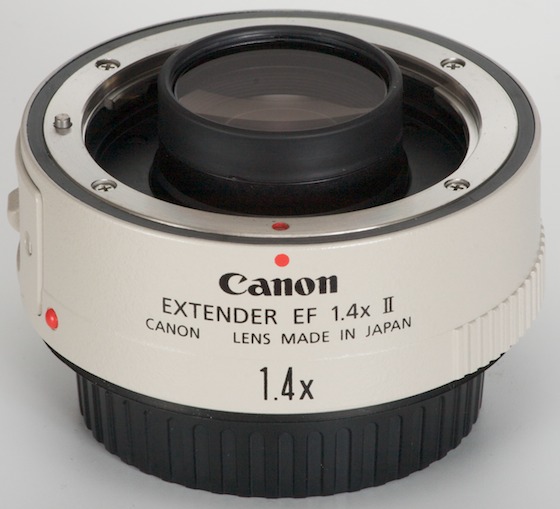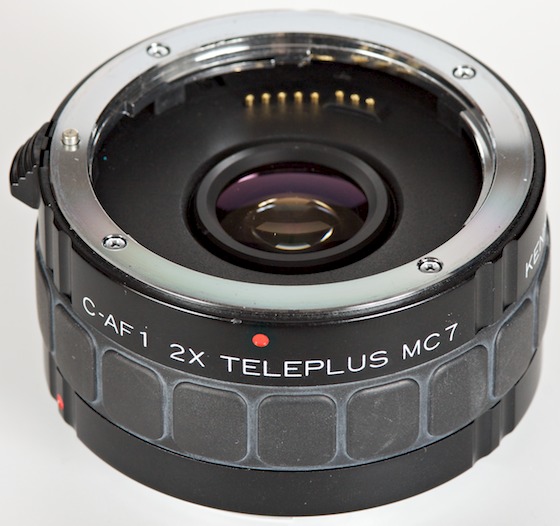ExtendersExtenders, also called tele converters, are devices which magnify the
center part of what lens is seeing and therefore they multiply the focal
length. When center part of lens is multiplied some light is also lost
and therefore 1.4x extender makes lens one stop dimmer and 2.0x extender
makes lens 2 stop dimmer. Canon EF 1.4x IIOptical performancePerformance depends also which lens is used. With Canon superteles (e.g. Canon EF300mm f/2.8L IS USM) there is no significant image quality drop when if shoot one aperture stop down. However performance will drop with shorter lenses (e.g. 130L and 200L) and with 70-200mm zooms the quality drop is even bigger. Handling and usageThere are no adjustments etc. in the extender itself. Therefore only
aspect I can thing of handling point of view is the slower focusing speed
and worse focus accuracy. However superteles work pretty well but for
example with Canon EF200mm
f/2.8L II USM and
Canon EF135mm f/2L USM are no longer usable with fast action sports
e.g. enduro racing. CompatibilityGenerally all telephoto primes longer than 135mm, except soft focus 135mm, are compatible. From zoom lenses 70-200 and longer lenses are compatible, at least physically, you may loose autofocus with non-professional cameras. Also TS-E lenses are compatible even Canon doesn't mention it. Summary
Pros: Canon EF 2.0x IIOptical performancePerformance depends also which lens is used. With Canon superteles
with f/2.0 or f/2.8 maximum aperture (e.g. Canon EF300mm f/2.8L IS
USM) quality drop can be tolerated if ultimate sharpness and contrast
is not needed. For landscapes 300/2.8L can be used with very good
image quality between f/9 and f/11, balancing between diffraction and
optimum aperture. Image quality with shorter tele lenses and zooms
is pretty bad and in most cases using 1.4x instead with "digital zoom"
in digital darkroom gives better results. Handling and usageThere are no adjustments etc. in the extender itself. Therefore only
aspect I can thing of handling point of view is the slower focusing speed
and worse focus accuracy. Superteles still do work to some extend, but
action sports is pretty much out of the question. Shorter teles and
zooms have really bad autofocus performance, in terms of speed and
accuracy. CompatibilityGenerally all telephoto primes longer than 135mm, except soft focus 135mm, are compatible. From zoom lenses 70-200 and longer lenses are compatible, at least physically, you may loose autofocus with non-professional cameras. Also TS-E lenses are compatible even Canon doesn't mention it. Summary
Pros: Kenko MC 7Optical performanceOptical performance is slightly worse than with Canon 2.0x mkII. Handling and usageThere isn't anything specific regarding handling. It attaches to lenses
and cameras as well as you could thing. There are no adjustments etc. CompatibilityThis extender does not have any protruding parts so it's compatibel with all Canon EOS lenses. However take into account the limitations to autofocus. Summary
Pros: Pictures of extendersCanon EF 1.4x Mark II
Kenko MC 7
|

